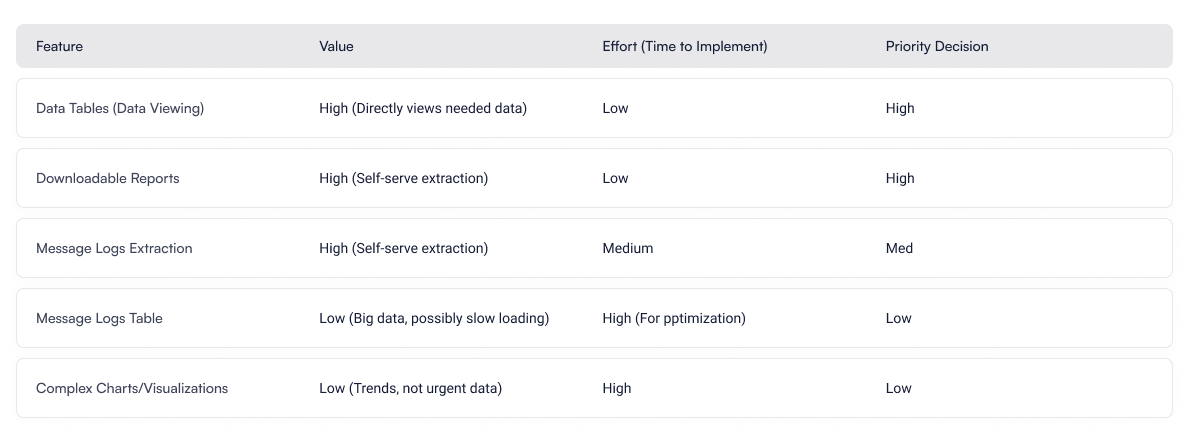Dashboard Redesign: Conflict Resolution and Quality Control
Fixed a 70% data dependency issue. Secured time, enforced a 1-month launch delay, and reduced support requests by 10%.
-
The project aimed to solve a major user problem that was fundamentally a usability and information architecture (IA) failure. While the existing dashboard contained the necessary data, users were not finding the information they were looking for, necessitating a full revamp and re-organization of data. This inability to self-serve meant 70% of users relied on customer support for data extraction, indicating a severe operational failure. Our goal was to redesign the dashboard to provide useful information and reduce support reliance.
-
Scrum Master: Owned project process and adherence to the initial 1-month delivery timeline.
Development Team: Responsible for implementation and scope estimation.
UX Lead (Me): Owned design quality, managed stakeholder communication, drove conflict resolution, and established systemic quality improvements.
Customer Support Team: Key stakeholder and data source on user dependency.
-
The team's strategic intervention and commitment to quality delivered clear results:
Support Reduction: Achieved a confirmed 10% reduction in customer support requests in the first week post-launch.
Quality Enforcement: Successfully enforced a one-month launch delay against internal pressure to ensure the product met required professional standards.
Systemic Foundation: The project's post-mortem analysis provided the critical data and justification needed to champion a future initiative to establish a Design System.
Phase 1: Planning & Strategy
The initiative faced an immediate crisis: an unrealistic one-week design timeline.
I refused the timeline and engaged stakeholders, framing the issue around business risk:
"Rushing a flawed product risks generating more support questions and wasting the development investment."
My intervention secured a compromise: a two-week design period.
To meet the revised schedule with quality, the UX team directed its full effort to complete three design iterations collaboratively.
Phase 2: Developing
My focus was maintaining project viability and enforcing quality throughout execution.
Scope Resolution: When the Development Team estimated the full design would take 3 months, I led the scoping and hand-off session. We collaborated closely with the developers, using a Time vs. Effort analysis to agree on a stripped-down, high-impact scope that was achievable within the remaining schedule.
Quality Enforcement: One week before launch, I discovered severe quality gaps (broken UI/inconsistent components). Despite pushback from the development lead to launch as-is, I formally recommended moving the deadline by one month, stating I would not sign off on a sub-standard product. The delay was granted, ensuring the Development Team delivered the required quality.
Phase 3: Launch
The team's commitment to quality was validated by measurable results:
Time-to-Market: The dashboard was delivered one month later than originally planned, directly due to the quality enforcement.
Confirmed Impact: The launch achieved a confirmed 10% reduction in customer support requests in the first week, directly validating our decision to prioritize usability over speed.
Phase 4: Govern
My responsibility extended beyond the project launch to address the systemic root causes of the quality conflicts revealed during development.
Systemic Solution: I leveraged post-launch data to immediately champion and drive a subsequent initiative to create a comprehensive Design System. This project provided a definitive source of truth for all UI components and design standards, proactively solving the internal miscommunication conflict and establishing a quality governance system for all future product development.



